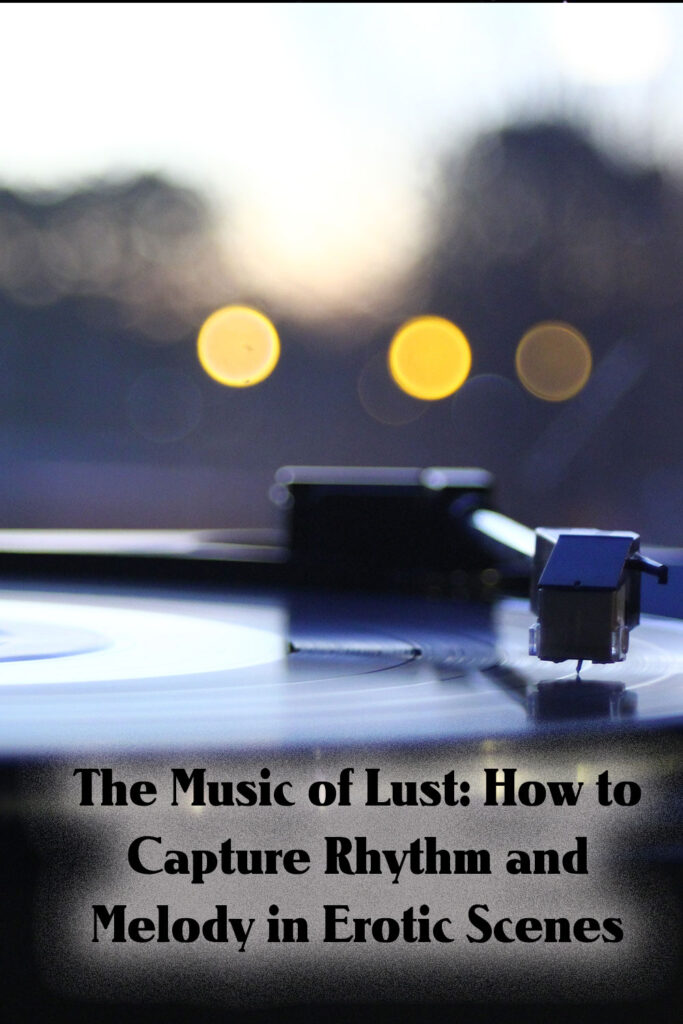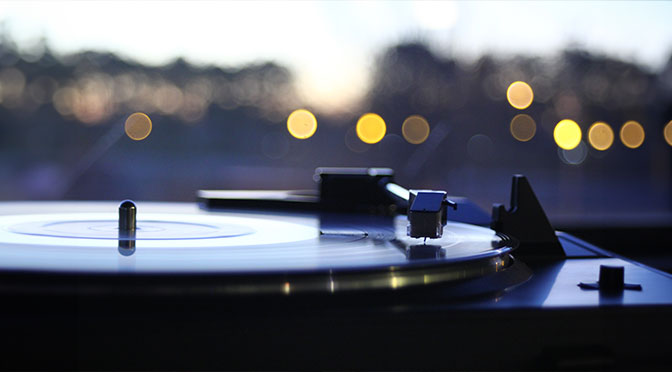Music plays an important role in human sensuality, and we can use it to our advantage when writing erotic scenes. Music can evoke emotions and enhance our physical reactions. Therefore, it can be a valuable tool for writers who want to add depth and passion to their erotic prose. In this post, we’ll explain how to incorporate rhythm and melody into your erotic text and create a sultry soundtrack that underscores your characters’ carnal desires.
Set the tone with music
You can use music to set the mood of your scene from the start. Consider introducing the sound of gently plucked guitar strings or drumbeats that make your heart beat faster. These sounds not only increase the anticipation of the scene, but also stimulate your reader’s imagination. You can also describe specific music genres, such as jazz, soul, or R&B, to evoke the feelings associated with that particular style of music. The deep bass and sassy lyrics of a Marvin Gaye classic, for example, can add a seductive and sultry touch to your scene.
Amelia entered the dimly lit venue and immediately felt the warm, inviting atmosphere. Soft jazz music filled the room, while a saxophonist on the small stage in the corner put his soul into the melody. The velvety voice of a female singer mingled with the sounds of the saxophone, creating an irresistibly seductive mood.
She let her eyes wander around the room, noticing the couples dancing closely, their bodies moving in time with the sensual rhythms. The sound of gently plucked guitar strings joined the music, making her heart beat faster and her imagination soar.
Amelia felt the music enter her blood and she let herself be carried away by the passionate sounds. She slowly moved to the dance floor and let a charming stranger take her in his arms. As they danced, their movements merged with the sultry sounds of a Marvin Gaye classic wafting through the air. The deep bass line and sassy lyrics added a seductive and exciting touch to the scene.
The night flew by and Amelia became more and more lost in the world of jazz, soul and R&B. The music had awakened her senses and taken her on a journey of emotion and passion.
Use metaphors and descriptive language
Music can serve as inspiration for evocative descriptions of intimate moments and actions. For example, use metaphors to compare the rhythm of lovemaking to the tempo of your favorite song. Likewise, the melody of music can be compared to the rise and fall of bodies during intimate play. Your readers will appreciate the creative descriptions and be able to imagine the scene more realistically.
Lena and Max lay tightly embraced on the bed while a soft melody played in the background. The music seemed to connect their souls as they gazed tenderly into each other’s eyes. The rhythm of the song reflected the tempo of their lovemaking, sometimes slow and sensual, then again passionate and fast.
Max gently stroked Lena’s hair and kissed her as the melody carried them on a wave of emotion. Their bodies moved in unison with the music, as if they themselves were part of the song. The harmony of their movements was reminiscent of the rise and fall of notes dancing through space.
The music created an atmosphere of intimacy and connection that elevated their relationship to a deeper level. They lost themselves in the sounds and closeness of each other as if they were one – fused by the magic of music and their love.
The last chord of the song faded away, but the intensity of their feelings remained. In that moment of silence, they realized that their love and the music were inextricably intertwined – together they formed a symphony of passion and affection.
Building sexual tension
Music has the power to create an erotic atmosphere that can heighten the sexual tension between characters. Consider using sensual music to build anticipation and increase tension. As the scene progresses, use the rhythm of different instruments to increase the tension. Imagine building to a crescendo by increasing the beat of a drum until you feel it in your chest. This gradual increase in rhythm builds anticipation and makes the scene more believable and intense.
In the dimly lit room, Sarah and Lucas danced close together while sensual music played from the old record player. The soft sounds of a violin, accompanied by a seductive piano, filled the room, creating an erotically charged atmosphere.
With each step they took on the parquet floor, they felt the anticipation between them grow. Their eyes met and they could literally feel the tension. The rhythm of the music seemed to connect their hearts as they grew closer and closer.
As the song progressed, the thumping of a drum suddenly began, its beat slowly increasing in intensity. The growing rhythm increased the sexual tension between Sarah and Lucas, who could now hardly separate from each other. They moved to the beat of the music as if their bodies spoke their own language – a language of passion and desire.
The crescendo of drumbeats reached its peak, and they felt their heartbeats pounding in their chests in unison with the rhythm. In that moment of musical ecstasy, they lost themselves completely in each other, letting the intensity of their feelings and the magical power of the music overwhelm them.
Think about musical lyrics
If you run out of words, you can use music lyrics to convey what is happening in that moment. You can also incorporate elements of music as lines of dialogue between characters. For example, imagine one character whispering the Bruno Mars lyric “You make me feel like I’ve been locked out of heaven” as she approaches her partner, and the emotional connection that signifies. These song lyrics can serve as inspiration for intense dialogue that will leave your readers wanting more. However, don’t be tempted to use long quotes or you may run into copyright issues. However, most music publishers will turn a blind eye to a single line of lyrics.
Eva and Ryan were sitting on the couch when suddenly Bruno Mars’ “Locked Out of Heaven” came on the radio. They hadn’t heard that song in a long time, but memories of their moments together came rushing back.
Ryan looked deep into Eva’s eyes and whispered the lines of the song, “You make me feel like I’ve been locked out of heaven for too long.” Eva felt her heart beat faster at those words and the emotional connection between them grew stronger.
She returned his smile and grabbed his hand. “Ryan, you make me so happy. You are my heaven on earth,” she said softly and tenderly touched his cheek.
The intensity of her words made Ryan pause. He took Eva’s face in his hands and kissed her passionately. As they broke away from each other, he whispered, “To be with you is to be in paradise for me.”
At that moment, they both felt overwhelmed by the magic of the music and the power of their love. The song lyrics had served as inspiration for an intense dialogue that deepened their emotional connection and brought them even closer.
Use music as a leitmotif
Music can be a recurring theme that subtly runs through your story. Introduce it early and repeat it often in different forms; if the scene calls for it, it will serve to mark transformative moments in the story or reflect the characters’ innermost desires. Music, then, can serve as a character in your story, a representation of something intangible yet tangible that holds the scene together.
Here’s a fictional example where music is used as a leitmotif that runs throughout the story.
Sophie had a special connection to the song “Moonlight Serenade,” which her grandfather often played on the piano. It was the song that had accompanied her grandparents at their first dance at their wedding, and it became a symbol of their undying love.
Throughout her childhood, Sophie would hear the song whenever she visited her grandparents’ home. The sound of the piano and the soothing melody of the song were deeply rooted in her heart, always reminding her of her family and the love that surrounded them.
As she grew older, “Moonlight Serenade” kept popping up in her life – at her graduation, during a romantic date, or even randomly on the radio as she drove home.
Finally, on the day of her own wedding, Sophie chose “Moonlight Serenade” for her first dance with her husband. In that moment, she felt the presence of her deceased grandparents and sensed how the song connected them all – past, present and future.
In this example, “Moonlight Serenade” serves as a musical leitmotif that subtly runs through Sophie’s life and throughout the story. The repeated use of the song in different scenes helps to mark transformative moments and reflect the main character’s innermost desires. The leitmotif connects the different sections of the story and creates a deeper level of meaning for the reader.
Music is an effective way to bring depth and intensity to your erotic text. Remember that it sets the tone, creates a sense of anticipation, helps build sexual tension, serves as a leitmotif, and provides descriptive language. Incorporating each of these elements into your writing can take your scenes from superficial to profound, from rushed to carefully crafted. Most importantly, use music like a lover to breathe passion and life into your work.


